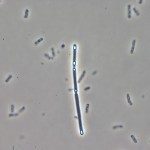Link to Pubmed [PMID] – 11377872
FEMS Microbiol. Lett. 2001 May;199(2):229-33
We describe a rapid method for determining nucleotide sequences directly from total genomic DNA. This technique was used to determine genomic DNA sequences in various prokaryotic and eukaryotic microorganisms with a G+C content between 40 and 50%, e.g. Escherichia coli, Vibrio cholerae, Bacillus subtilis and Saccharomyces cerevisiae. Furthermore, the method was applied to accurately sequence up to 300 DNA base pairs in Photorhabdus luminescens, whose genome sequencing is currently under way. Taken together, these results provide evidence that our technique can be widely used to easily and efficiently determine genomic DNA sequences.
